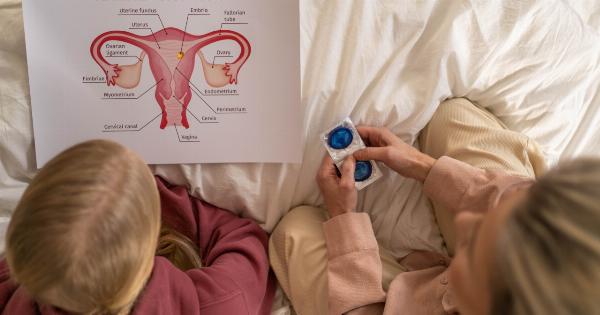Adolescence is a vital stage in everyone’s life, and during this period, young individuals experience significant hormonal imbalances.
One of the critical issues that young people face during adolescence is a safe and effective means of preventing unwanted pregnancies. Apart from the traditional use of condoms, many modern contraceptive methods exist that can help prevent unwanted pregnancies.
In this article, we will compare adolescent contraception in Switzerland and Britain and analyze the differences between these two nations.
The Situation in Switzerland
Switzerland is a country located in Western Europe and has an estimated population of 8.6 million people.
In Switzerland, the use of contraceptives is relatively high, with approximately 85% of the country’s women using at least one method of contraception. The most common methods of contraception used by adolescents in Switzerland include the use of condoms, oral contraceptives, and intrauterine devices (IUDs).
According to a report published by the Swiss Federal Statistical Office, approximately 72% of adolescent women aged between 15 and 19 years old use contraception. Out of the 72%, 61% use condoms, while 19% use contraceptive pills or injectables.
The report further indicated that the use of long-acting reversible contraceptives (LARC), such as intrauterine devices (IUDs) or implants, was relatively low, standing at approximately 3%.
The Situation in Britain
Britain is an island country that is home to over 66 million people. In Britain, the use of contraceptives is also relatively high, but there are still significant differences among young individuals.
According to a report published by the Office for National Statistics, teenage pregnancy rates in Britain have been declining steadily, and in 2018, the rate was 17.9 per 1000 women aged between 15 and 19 years old. This decline can be attributed to the high rate of contraceptive use among teenagers in Britain.
The most common form of contraception used by adolescents in Britain is condoms.
Additionally, the use of long-acting reversible contraceptive (LARC) methods, such as intrauterine devices (IUDs) or implants, has increased significantly over the past decade. A report published by the Faculty of Sexual and Reproductive Healthcare indicated that there were approximately 54.6 IUD or implant fits per 1000 women aged 15 to 19 in 2018, compared to 46.2 fits per 1000 women in 2017.
Comparing Adolescent Contraception in Switzerland and Britain
While the use of contraceptives among adolescents in Switzerland and Britain is relatively high, several key differences exist between these countries. One of the key differences is the use of long-acting reversible contraceptives (LARC).
In Switzerland, the use of LARCs, such as IUDs or implants, is relatively low, standing at approximately 3%. Conversely, in Britain, the use of LARCs among adolescents has increased significantly over the past decade.
Another key difference is the use of oral contraceptives among adolescents. In Switzerland, the use of oral contraceptives is relatively high, standing at approximately 19%.
In contrast, the use of oral contraceptives among teenagers in Britain is relatively low, standing at approximately 6%.
Despite these differences, both countries have seen a decline in teenage pregnancy rates over the past decade, which can be attributed to the high rate of contraceptive use among young individuals.
Conclusion
In conclusion, adolescent contraception is essential in preventing unwanted pregnancies and ensuring that young individuals can reach their full potential.
Switzerland and Britain both have relatively high rates of contraceptive use among adolescents, although several differences exist between these countries, such as the use of long-acting reversible contraceptives. While more research is needed to determine the efficacy of different contraceptive methods, it is vital that young people worldwide have access to safe and effective means of preventing unwanted pregnancies.






























